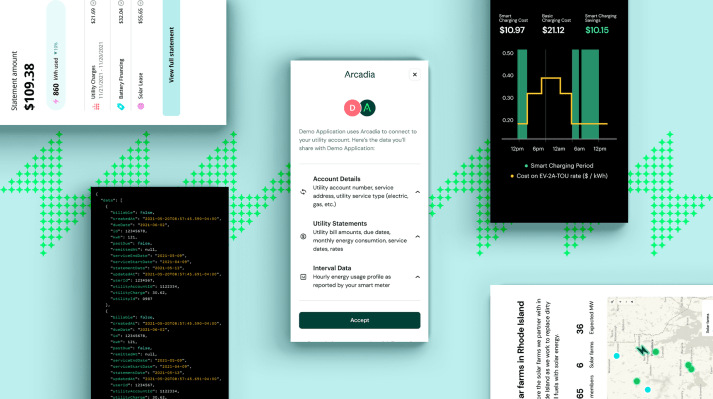You can’t cut what you can’t measure.
For many companies, carbon emissions are something of a black box. Energy goes in, products and emissions come out. The first two are simple enough to monitor and understand, but without an expert on hand, the emissions profile is harder to pin down.
“If people can’t access this data, not only can they not benchmark it, they can’t act on it.” Arcadia CEO Kiran Bhatraju
That’s where Arcadia is hoping to come in. The renewable energy company, fresh off a $200 million Series E that closed in May, today announced a partnership with Salesforce to add its Data Connector tool to the AppExchange in the cloud company’s Net Zero Cloud offering.
“The E in ESG reports, they tend to be estimates,” Arcadia co-founder and CEO Kiran Bhatraju told TechCrunch. Frequently, those estimates come from building managers filling out surveys, he said. “They tend to lack any sort of specificity around the data.”
Yet estimates may not be good enough in the near future. As investors and consumers continue to demand more transparency and accountability from companies, and as the U.S. Securities and Exchange Commission continues to mull climate disclosures, the need for auditable data is likely to increase.
Companies can use Arcadia’s Data Connector to get a robust estimate of their carbon footprint by connecting to their utility accounts. Arcadia then handles the rest, using regional emissions data to get a more verifiable estimate of the carbon footprint for one or more of a company’s sites.
Bhatraju said that Arcadia is well positioned to fill the gap. The startup has been building and refining its Arc platform over several years. Its initial offering was targeted at consumers who wanted access to renewable power but were renters or didn’t have a rooftop that was suitable for solar. That go-to-market strategy allowed Arcadia to hook into utilities and create a massive data repository that went into building the Arc platform that underpins its new Salesforce app.
The partnership with Salesforce is intended to make it easier for companies to monitor and report on their carbon emissions. Arcadia has connections with 9,500 utilities in 52 countries, which it uses to display a customer’s energy use on a Salesforce dashboard. The dashboard then uses data from the U.S. Environmental Protection Agency’s eGRID and the International Energy Agency to estimate the carbon emissions of that energy use.
“Within the AppExchange, companies connect their utility accounts. And the value prop there is obviously the carbon report — the specificity, the ability to aggregate across your portfolio,” Bhatraju said. “If you have 1,000 locations, for example, or even your supply chain, you can ask them to connect their utility accounts.”
For many companies, that data would give them deeper insights into their Scope 2 and 3 emissions, which include electricity bought from the grid, for example, and emissions from indirect sources like suppliers, respectively. Traditionally, those have been the hardest to quantify.
For Arcadia, the Salesforce integration is one step of many it’s taking to become a central data source for everything related to the grid. Bhatraju likened his company’s Arc platform to Plaid, the financial services platform that allows applications to establish secure connections with financial institutions on behalf of customers and access their data. The thinking is that by making that data available and accessible, Arcadia could facilitate the development of new energy products.
“Unlocking the connection to the meters and the wires that are in our homes and businesses is crucial for any of these new energy products,” he said.
For now, Arcadia is focused on helping companies establish a baseline so they can better understand their current climate impact.
“If people can’t access this data, not only can they not benchmark it, they can’t act on it,” Bhatraju said. “The next step, and where the partnership will go in the future is, how do you affect carbon emissions? Now that you have a sense of it, what are you actually going to do to lower it?”
